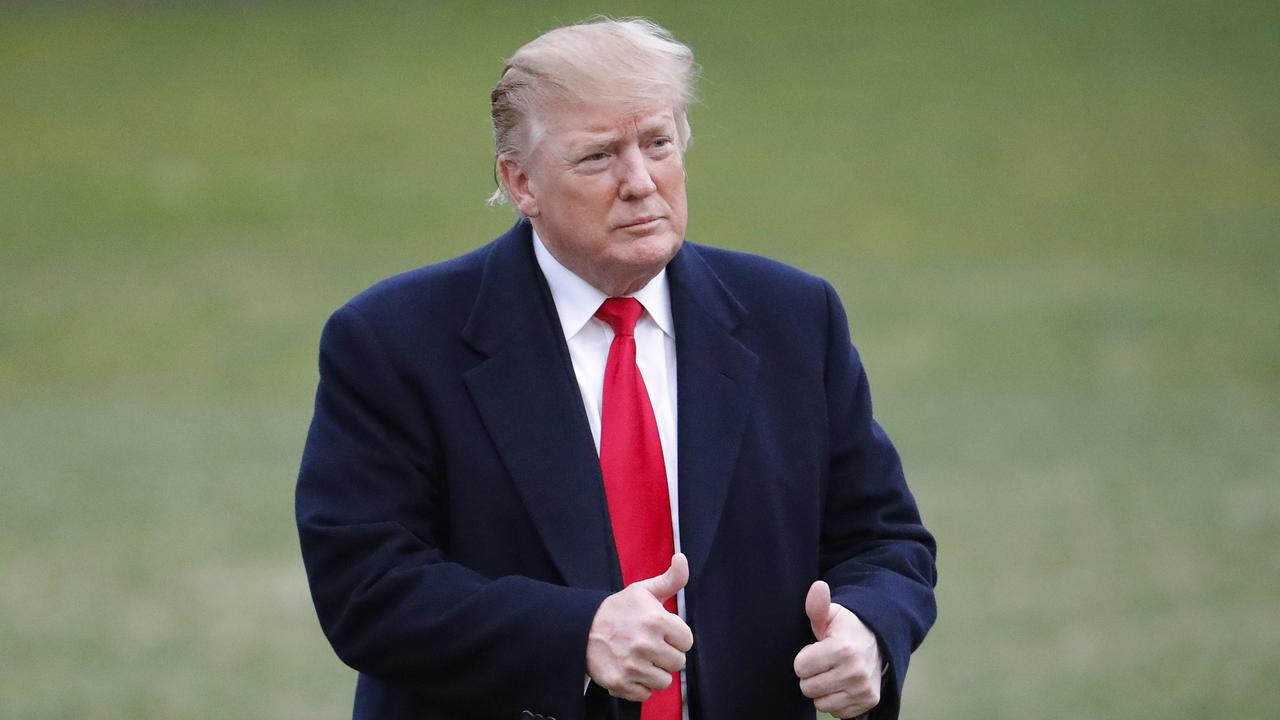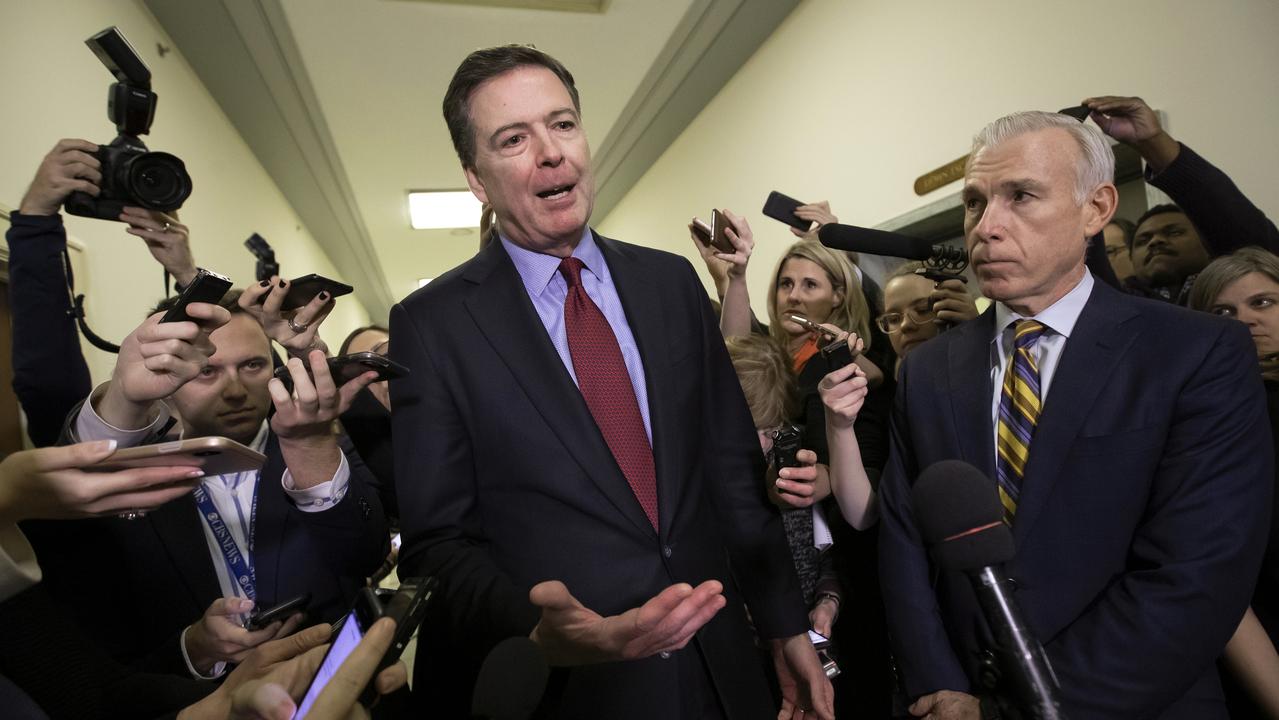
In Iraq and Syria, military progress is real but the politics are worse than ever. And Islamic State’s global reach may render local gains moot.
Since its high-water mark mid-last year, Islamic State has been losing ground to local offensives backed by international air power and advisers. By some counts, the group has lost 40 per cent of its territory. It now controls a flattened triangle of terrain with its northern and eastern corners at Mosul and Fallujah in Iraq and its western extremity near Islamic State’s de facto capital in the Syrian city of Raqqa. All three cities are now under attack, with Fallujah seeing the fiercest fighting.
Last week, Iraqi troops, with Sunni tribal forces, special operators from Iraq’s Counter Terrorism Service and Iranian-backed Shia militias broke into Fallujah’s northern districts, seized a satellite town and cleared outlying suburbs. Western aircraft launched supporting strikes, and ground forces are poised to move on the city centre.
There’s heavy fighting ahead: Fallujah is booby-trapped with hundreds of improvised explosive devices, thousands of well-armed enemy fighters are dug into fortified positions, and at least 50,000 civilians remain captive in the city, being cynically exploited as human shields.
Last Monday, Islamic State fighters launched a ferocious four-hour counter-attack on the outskirts of Fallujah, with suicide bombers and mobile combat groups attacking from multiple directions, showing they retain strong offensive capability. And last month the group carried out a string of horrific bombings in Baghdad, killing and injuring hundreds of civilians and demonstrating its continued reach into the Iraqi capital.
Islamic State has controlled Fallujah — just 35km from Baghdad’s western outskirts — since early 2014, giving it more than two years to prepare a mobile defence in depth. If last year’s battles in Tikrit and Ramadi are any guide, it could take Iraqi forces many weeks of intense combat to secure Fallujah completely, leaving the population devastated and the city in ruins.
But, as ever in Iraq, it’s the sectarian and ethnic politics that are the real problem.
As in Tikrit last year, Shia militias have been accused of horrific sectarian abuses. Last week, human rights groups alleged that the militias — funded and advised by Iranian Quds Force operatives and loyal to Shia-supremacist former Iraqi prime minister Nouri al-Maliki — dynamited a Sunni mosque in Karmah on Fallujah’s northeastern outskirts, kidnapped and killed Sunni civilians, and are running death squads.
Shia leaders including the venerated Ayatollah Ali al-Sistani have called for restraint, condemned sectarian cleansing and expressed alarm at the growing influence of Iran, and of Quds Force chief Qasem Soleimani, in Iraqi politics. Likewise, Western air support has been restricted to the Iraqi Army and CTS only, with no support for sectarian militias.
This may make little difference, though: militia commanders say they plan to let the army and CTS bear the brunt of the fighting to recapture Fallujah, then move in to take control of the city. Thus the Fallujah offensive, even if it succeeds, could deepen Iraq’s sectarian divide, leave government forces weaker, and position Iran and its militia proxies to fill the gap and take the credit.
On the northern edge of Islamic State’s remaining core territory, Kurdish and Iraqi forces are encroaching on Mosul, establishing outposts and firebases around the city ahead of a projected assault later this year. This is the fabled Mosul offensive that has been repeatedly scheduled, and just as frequently postponed, since the city fell in June 2014. When it comes, the attack is expected to take at least 30,000 Iraqi ground troops, vast amounts of ordnance, and several months.
As in Fallujah, Islamic State has had two years to put Mosul into a state of defence, and most recent estimates suggest about 9000 fighters are in the city. Their control may be weaker than it appears: Mosul is much larger than Fallujah, Islamic State defenders are more thinly spread, the city is isolated and harder to reinforce, and there’s an armed resistance movement that assassinated the Islamic State governor of west Mosul in late 2014. Political opposition groups are also active in Mosul, despite atrocious abuses by Islamic State enforcers.
Still, as in Fallujah, Islamic State is not sitting around idly awaiting the attack: its fighters have mounted counter-attacks all around the city’s perimeter, seeking to keep Kurdish and Iraqi forces off-balance. Last December they attacked with an armoured bulldozer, heavy weapons and multiple suicide bombers, penetrating all the way to Tal Aswad, a village on the Mosul-Irbil highway east of the city. A combined force of Kurdish peshmerga and Canadian special operators — setting aside their “advise and assist” role to engage in direct combat — stopped the attack after hours of intense fighting.
More recently, a US Navy SEAL was killed in a heavy firefight while rescuing American advisers cut off near the village of Telskuf, an hour’s drive north of Mosul, and rocket fire killed a US marine in a firebase at Makhmour to the city’s south.
Again, though, whatever the military challenges of the projected Mosul operation, the political problems are worse.
Kurdish politics are on a knife-edge, with intensifying rivalry between Masoud Barzani’s Kurdistan Democratic Party and the Kurdistan Workers Party (PUK) led by Jalal Talabani. Barzani’s term as president of the Kurdistan Regional Government ended last August but he declined to step down, citing the crisis.
PUK and its allies — including groups in Syria and others opposed to Turkey — increasingly are disillusioned with the status quo. They have launched protests in several cities, there have been occasional armed clashes, and there are accusations of brutality against KDP and its police and intelligence service, the Asayish. Co-operation among rival Kurdish forces — more than 40,000 troops, holding a critical 900km front against Islamic State — is at its lowest level in recent memory.
Low oil prices also have hurt Kurdistan’s economy, creating budgetary problems for the government and hardship for the population. At the same time the influx of weapons, trainers and munitions since 2014 has left Kurdish groups more gunned-up. The long-term effect may thus be a poorer, but better armed, less unified and more fractious Kurdistan.
Arab-Kurdish politics are even more fraught: there are ongoing territorial disputes, sometimes violent, between the Kurdish region and the rest of Iraq, while Barzani has called for a referendum on full independence (as distinct from regional autonomy) in November, and there’s little love lost between the peshmerga and the Shia militias increasingly active on their southern flank.
Kurdish forces occupied Kirkuk, an oil production centre long disputed between Kurds and Arabs, when the Iraqi Army abandoned the city in June 2014, and Barzani’s referendum is seen as an attempt to ratify the Kurds’ permanent control over the city.
And as the battle for Mosul looms, Kurdish commanders chafe at the assumption that the peshmerga, with a well-earned reputation as Iraq’s best fighters, having already suffered thousands killed and wounded in the fight against Islamic State, will carry the main combat burden. Why should the peshmerga sacrifice their lives — not to mention expending their newly acquired ammunition stockpiles, advanced weapons and enhanced military capability — to recapture a mainly Arab city for a government in Baghdad that they distrust?
Aziz Ahmad of the Kurdistan Region Security Council wrote last week that Kurds expect permanent control of Kirkuk, its resources and the more than 20,000sq km seized by the peshmerga since 2014 as the price for helping Baghdad. “No peshmerga will die to restore Iraqi unity,” Ahmad argued, and as for territory seized from Islamic State (including Kirkuk), “we want it all”.
In Syria, on the western extremity of Islamic State’s rump territory, another offensive is developing near Raqqa.
Syrian Democratic Forces, a Western-backed alliance of Kurdish groups supported by US special forces and coalition airstrikes, has advanced on Tabqa air base, 60km west of Raqqa. Heavy fighting is going on around the air base and between Tabqa and Raqqa, but SDF is unlikely to get close to the Islamic State capital, let alone capture it, without far greater numbers and support.
Yet again, the politics are the problem: SDF is aligned with PUK and with the anti-Turkish PKK, and the presence of US advisers has drawn sharp criticism from Turkey. Thus the US-led coalition is backing rival Kurdish factions on each side of an increasingly notional Syria-Iraq border, running the risk of alienating Turkey (whose support is critical to the air campaign) as it moves against Raqqa. And then there’s the Free Syrian Army.
Despite the destruction of Syrian cities, there’s still spotty internet across Syria and mobile networks remain largely intact. Last month I used the surviving phone system to discuss the fighting with an FSA leader in northern Aleppo province.
Mustafa Sejari joined the uprising against Bashar al-Assad’s regime at the outset of the conflict in 2011. Last year, he and others in Aleppo formed the al-Moutasem Brigade, a group of 500 fighters commanded by Colonel Mohammed Hassan Khalil, a former Syrian officer who defected to the rebels. The brigade is one of several FSA factions that have received weapons, training and air support from the US-led coalition.
Like almost all FSA rebels I’ve spoken with, the brigade’s members — including Sejari, who was a pro-democracy activist before the war and is now president of the brigade’s political council — joined the uprising specifically to overthrow the regime. They believe Assad must leave Syria before the country can achieve peace. But they also see Islamic State as a deadly threat and believe the group has formed a de facto alliance with Assad’s forces.
Unlike Western political leaders, who tend to see Assad and Islamic State as opposites and worry that the regime’s fall would create space for extremists, Sejari and his group regard the two as being in league with each other.
As Sejari puts it, “Of course one of our duties is to protect women, children and the elderly, to protect villages in the northern Aleppo countryside, but our main duty is to completely free our country from both Assad and ISIS (Islamic State). Assad and his regime must go: the Syrian people have the right to take their future in their own hands. But I was in Assad’s prisons for five years before the revolution started, as a political prisoner, and I saw clearly how Assad produced and supported extremists. Even today the Russian (air and artillery) attacks favour ISIS, and ISIS helped Assad recapture previously liberated parts of Syria. In the end, Assad’s fall will be the fall of ISIS — end of story.”
The Assad regime has killed vastly more people than Islamic State — about nine times as many. So for ordinary Syrian citizens, the regime is a far more dangerous adversary than the terrorist group. And there’s solid evidence to support Sejari’s claims of collusion, ranging from credible reports that Assad’s intelligence service armed jihadists in the early days of the conflict, seeking to turn peaceful protests into an armed uprising that would justify a government crackdown, to incidents where Assad’s artillery shelled FSA units under attack from Islamic State in Aleppo in 2013.
More recently, Russian airstrikes — directed from the ground by Syrian government forces or their Iranian allies — have mainly targeted secular rebels, while the regime’s horrendous nerve gas attacks of August 2013 broke up an FSA-led offensive by mainly moderate and secular rebel groups that threatened the eastern suburbs of Damascus. The chemical attack, and the failure of Western governments to enforce their “red line” afterwards, strengthened the regime and Islamic State, at the expense of mainstream rebels, and helped the jihadists vastly expand their influence.
It was the 2013 gas attack, in part, that convinced FSA-aligned rebels such as Sejari that both the Islamic State and Assad had to be defeated before there could be peace. As a result, since 2013, the FSA has been fighting the regime and the jihadists alike. This stance has brought severe violence against the brigade and its supporters. Like most secular pro-democracy groups in Syria, the al-Moutasem Brigade is being ferociously attacked from all sides — including by Kurdish forces, some loosely affiliated with US-backed groups like the SDF. In the kaleidoscope of Syrian rebel politics, which is even more complex than in Iraq, the international coalition often seems to be backing both sides against the middle.
Sejari texted me from the brigade’s command post in Marea, a besieged town about 25km north of Aleppo City and about the same distance from Syria’s northern border with Turkey. This is the southeastern edge of the so-called “Azaz-Marea pocket”, a shrinking corridor in northern Aleppo province that once provided the only supply route connecting rebel-held eastern districts of Aleppo City to the Turkish border. Today, Marea is on the frontline: as we spoke, Islamic State positions were less than 500m from the southeast edge of town, while pro-Assad militias were 4km to the west.
Beginning in February, Russian-backed Syrian forces mounted a determined offensive to cut the corridor and encircle Aleppo, while Islamic State has been attacking from the east and south, and Kurdish forces from the north. The regime succeeded in cutting Aleppo off in March. Marea is now almost surrounded and was under continuous heavy shelling during our conversation.
Only a few weeks ago, early in the northern spring, things looked much better: during the winter, al-Moutasem Brigade and its allies organised the Hawar Kilis Operations Room, which included several FSA and Turkish-backed rebel groups. Together, they mounted a major offensive against Islamic State. Through March and April they succeeded in liberating 27 villages, pushing towards the symbolically important town of Dabiq (which features heavily in Islamic State’s apocalyptic propaganda) and seizing the border crossing of al-Rai, one of the Islamic State’s main access points to Turkey and beyond.
Coalition warplanes supported the offensive from Incirlik air base in Turkey, less than 15 minutes’ flight time from the frontline. In one strike that brought cheers from ground troops, an A-10 knocked out an up-armoured Humvee (a hardened vehicle captured by Islamic State in Iraq, packed with explosives to turn it into a mobile suicide bomb) before the attacker could get near rebel lines. In all, coalition aircraft carried out at least 22 airstrikes.
But al-Rai turned out to be the high point. Within days Islamic State mounted a savage counter-attack and the rebels — now running critically low on ammunition — lost control of the border crossing and were pushed back.
The jihadists threw at least 11 suicide car bombs into the attack, breached the rebel line in several places, and forced them to retreat. Islamic State fighters launched intense night attacks. With rudimentary logistics, and lacking specialist capabilities such as snipers and night vision, the al-Moutasem Brigade and its partners were forced to retreat.
The experience of Sejari and his group — like the fighting in Fallujah, the on-again, off-again Mosul offensive, and the SDF offensive against Raqqa — illustrates the broader challenges of the war in Syria and Iraq, a conflict that’s unlikely to end anytime soon.
The military situation, though dangerous and complex on the ground, is somewhat better than it has been, with Islamic State under pressure or losing ground in each of the three corner cities of its remaining territory. But the political goals of the peshmerga, the Syrian SDF or the FSA — the people on whom the international coalition depends to carry out the actual fighting against Islamic State — are increasingly at odds with those of leaders who believe peace and stability in Iraq depend on Shia-Sunni reconciliation.
Likewise, the goals of groups such as Sejari’s brigade are incompatible with those of international negotiators who see the solution in Syria as a “managed transition”, with Assad playing a role in a transitional government, ahead of an internationally brokered referendum on the future government of Syria. Iran and Russia — whose intervention in September last year radically altered the terms of the conflict — are key Assad allies who seek a controlling role in that transition, and the US-led coalition, while militarily capable, seems willing to hang back and let the Russians handle Islamic State after stabilising Assad.
And even as it comes under increasing pressure in Syria and Iraq, Islamic State is expanding in Libya, Afghanistan, Europe, East Africa and Southeast Asia. Islamic State spokesmen have called for a global offensive during Ramadan, which begins on Monday. This global reach gives Islamic State great resiliency, even as it continues to lose ground in its heartland.
Thus, unfortunately, despite very real military successes on the ground, the combination of intractable politics and Islamic State’s global reach mean that the threat is far from contained.
David Kilcullen was a senior adviser to US general David Petraeus in 2007-08, when he helped to design and monitor the Iraq war coalition troop surge, and was a special adviser for counter-insurgency to US secretary of state Condoleezza Rice. His most recent book is Blood Year: Islamic State and the Failures of the War on Terror (Black Inc).




To join the conversation, please log in. Don't have an account? Register
Join the conversation, you are commenting as Logout